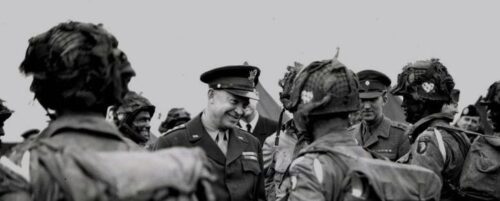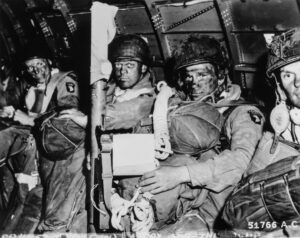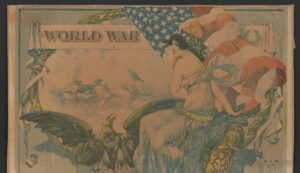
D-Day: What if it had failed?
General Dwight Eisenhower was the most powerful man in the world in early June, 1944, and then a moment later, he was largely powerless. The invasion force of which he was supreme commander would land almost 200,000 troops in the Normandy region of France within the first 24 hour of Operation OVERLORD, better known now as D-Day. That is, this would happen if the invasion was successful – and to be successful a few key elements had to go the Allies’ way. First, the airborne landings, from the American 82nd and 101st Airborne and British 6th Airborne divisions, would have to succeed. Dropped inland of the landing beaches on the night of June 5th, these thousands of men were tasked with seizing bridges, key road junctions, and other locations in order to prevent the Germans from quickly counterattacking at the beaches.
The second key element was the beaches or, rather, the six Allied infantry divisions – three American, two British, and one Canadian – that were to land on them at just after dawn on June 6th. These units would have to fight their way ashore, establish a firm hold on each beach and the areas immediately inland of them, and then link up with one another as quickly as possible. This, through German defenses – the “Atlantic Wall of “Fortress Europe,” as Hitler called them – that had been built up over several years and were under the command of Field Marshal Erwin Rommel, the famed Desert Fox.
The airborne landings, which were being conducted on a scale never before tried, and the amphibious landings, which turned out to be the largest ever in history, had to both be successful before German tanks and other units could be brought forward from inland France. In addition to the German defenders and defenses, the Allies had to contend with high seas and only just-tolerable weather conditions, which initially forced Eisenhower to postpone the invasion from its original date of June 5th, and gamble that June 6th, when better weather was forecast, would be followed by a few extra days of clear skies to facilitate air cover and follow-on forces.
Through all these variables, Eisenhower had the power and responsibility to make the final call on whether to ‘go’ or not. The lives of so many thousands of troops – Allied and enemy – were in his hands, along with the fate of a continent. That is, until he gave the order to go, which he did in the small hours of June 5th. Thus, over 24 hours before the sun rose over a 5000-ship armada, Ike made himself powerless by giving the order only he could give.
The “soldiers, sailors, and airmen of the Allied expeditionary force,” as he addressed them in his D-Day message given out and read the day before, were now going to see if the year-plus of planning and years of training would be enough for them to win the day, and from it the war. Although Ike expressed every confidence in his troops and the plan, he knew that victory was not guaranteed, and so wrote a short note, which he kept on his person, to be delivered to his superiors should the invasion fail. In this brief statement, Ike demonstrated the quality of his character and leadership: the willingness to take full responsibility for his work, no matter the outcome. Read his brief statement below and consider the tension between the power with which he was entrusted, and the massive burden he carried along with it.
Hand-written, unissued message:
Our landings in the Cherbourg-Havre area have failed to gain a satisfactory foothold and I have withdrawn the troops. My decision to attack at this time and place was based upon the best information available. The troops, the air and the Navy did all that bravery and devotion to duty could do. If any blame or fault attaches to the attempt it is mine alone.
Read also the OVERLORD Operations Order, from March 1944, in which the invasion itself – its ends and means – is sketched out for the Allied military. Note that the code word stamped on the document, “BIGOT” (possibly an acronym for British Invasion of Occupied Territory), indicates that it is genuine, unlike a set of false documents, stamped “ultra secret”, that were generated to mislead the German intelligence services. To be “bigoted” in reference to OVERLORD meant to have been briefed in fully. In the months leading up to the invasion, only a few leaders and a tiny group of trusted officers knew when and where the invasion would take place. This copy of the order comes from the Ike Skelton Combined Arms Research Library, of the United States Army’s Combined Arms Center at Fort Leavenworth, Kansas.



